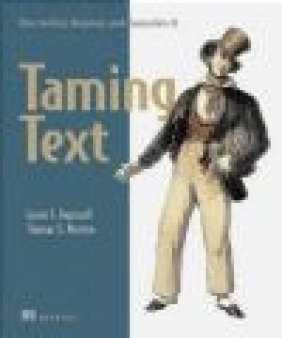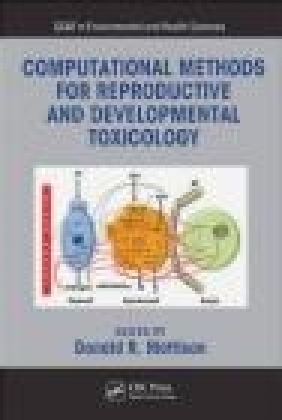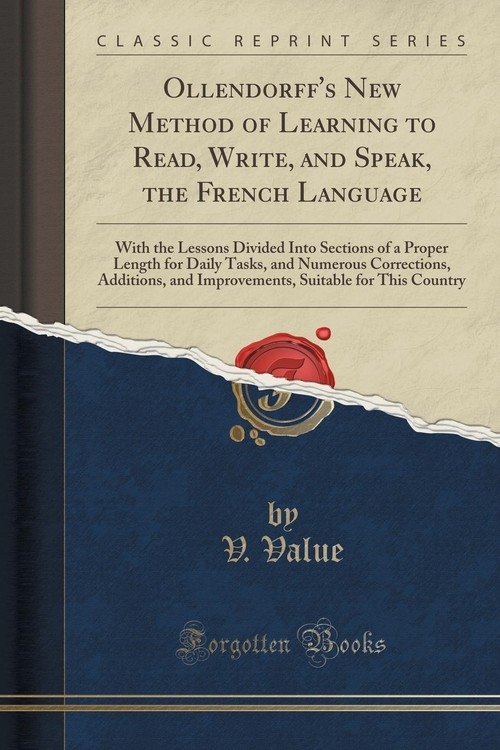 Fun Skills Level 6/Flyers. Student’s Book with Home Booklet and Mini Trainer with Downloadable Audio
Fun Skills Level 6/Flyers. Student’s Book with Home Booklet and Mini Trainer with Downloadable Audio
Ollendorff's New Method of Learning to Read, Write, and Speak, the French Language With the Lessons Divided Into Sections of a Proper Length for Daily Tasks, and Numerous Corrections, Additions, and Improvements, Suitable for This Country
Value V.
Ollendorff's New Method of Learning to Read, Write, and Speak, the French Language
With the Lessons Divided Into Sections of a Proper Length for Daily Tasks, and Numerous Corrections, Additions, and Improvements, Suitable for This Country
Value V.
- Wydawnictwo: Inwestycje
- EAN: 9781330658505
- Ilość stron: 594
- Format: 15.2x22.9cm
Niedostępna
Opis: Ollendorff's New Method of Learning to Read, Write, and Speak, the French Language - Value V.
Excerpt from Ollendorff's New Method of Learning to Read, Write, and Speak, the French Language: With the Lessons Divided Into Sections of a Proper Length for Daily Tasks, and Numerous Corrections, Additions, and Improvements, Suitable for This Country<br><br>True, a part only of a lesson may be assigned as a task, but the teacher must then daily ascertain the extent of the lesson, in order to portion it according to the capacity of his class. With a private scholar, even with a private class, that may be done without much inconvenience; but the case is different when applied to classes in schools, where more regularity and uniformity are required, and where, the scholars having to pass quickly from one study to another, have no time allowed for measuring the fractional part they ought to have for the next recitation. With the view of remedying this serious objection, the equalization of the lessons was thought expedient.<br><br>To divide each long lesson into two, three, or four small ones, would in a great measure have destroyed the unity which characterizes each particular and successive lesson in the book. This was thought objectionable; and hence the idea of dividing each lesson, according to its length, into two, three, or four sections, so as to obtain the equalization of the parts without destroying the unity of the whole.<br><br>It is what has been accomplished, and which is now presented to the American public.<br><br>One of the strongest proofs that can be adduced of the superiority of the principle here followed is that, in spite of the numerous faults, inaccuracies, defects, omissions, and errors with which the former book is teeming, scholars learn, and learn well. The half of those errors would destroy the reputation of any other grammar or method, was not the fundamental principle so self-efficient. Those defects are like grades on a railroad: they may partially impede the way, but the moving power of the engine easily overcomes them. We will notice a few of them. At page 24, we find:<br><br>This or that ox. This or that hay. Ce buf. Ce foin.<br><br>As the three words this or that are translated by ce alone, it is very natural that the student should, in the fourteenth line of the 18th Exercise, translate "Has the peasant this or that ox" by "Le paysan a-t-il ce buf and nothing more; and the answer, "He has neither this nor that," by "II na ni ce," without adding anything else.<br><br>This is one of those results that experience alone can teach and record; and which no reasoning a priori could suggest. At the same time it shows how carefully we must weigh and analyse the expressions, offered to the learner. For, in this instance, the error came not from any fault of his; but solely from the combination of the three words this or that being carelessly translated by ce. To obviate the difficulty, say: this, that - ce; this, that ox - ce buf. And then, when he comes to: this or that ox, he cannot possibly translate by ce buf alone, but he will use Ce bceuf-ci ou celui-la, &c.<br><br>About the Publisher<br><br>Forgotten Books publishes hundreds of thousands of rare and classic books. Find more at www.forgottenbooks.com<br><br>This book is a reproduction of an important historical work. Forgotten Books uses state-of-the-art technology to digitally reconstruct the work, preserving the original format whilst repairing imperfections present in the aged copy. In rare cases, an imperfection in the original, such as a blemish or missing page, may be replicated in our edition. We do, however, repair the vast majority of imperfections successfully; any imperfections that remain are intentionally left to preserve the state of such historical works.
Producent:
Swede Sp. z o.o. Sp.k.
Wysogotowo ul. Laurowa 18
62-081 Przeźmierowo (PL)
tel: 616531076
email: [email protected]
Szczegóły: Ollendorff's New Method of Learning to Read, Write, and Speak, the French Language - Value V.
Nazwa: Ollendorff's New Method of Learning to Read, Write, and Speak, the French Language With the Lessons Divided Into Sections of a Proper Length for Daily Tasks, and Numerous Corrections, Additions, and Improvements, Suitable for This Country
Autor: Value V.
Wydawnictwo: Inwestycje
Kod paskowy: 9781330658505
Języki: angielski
Ilość stron: 594
Format: 15.2x22.9cm





























